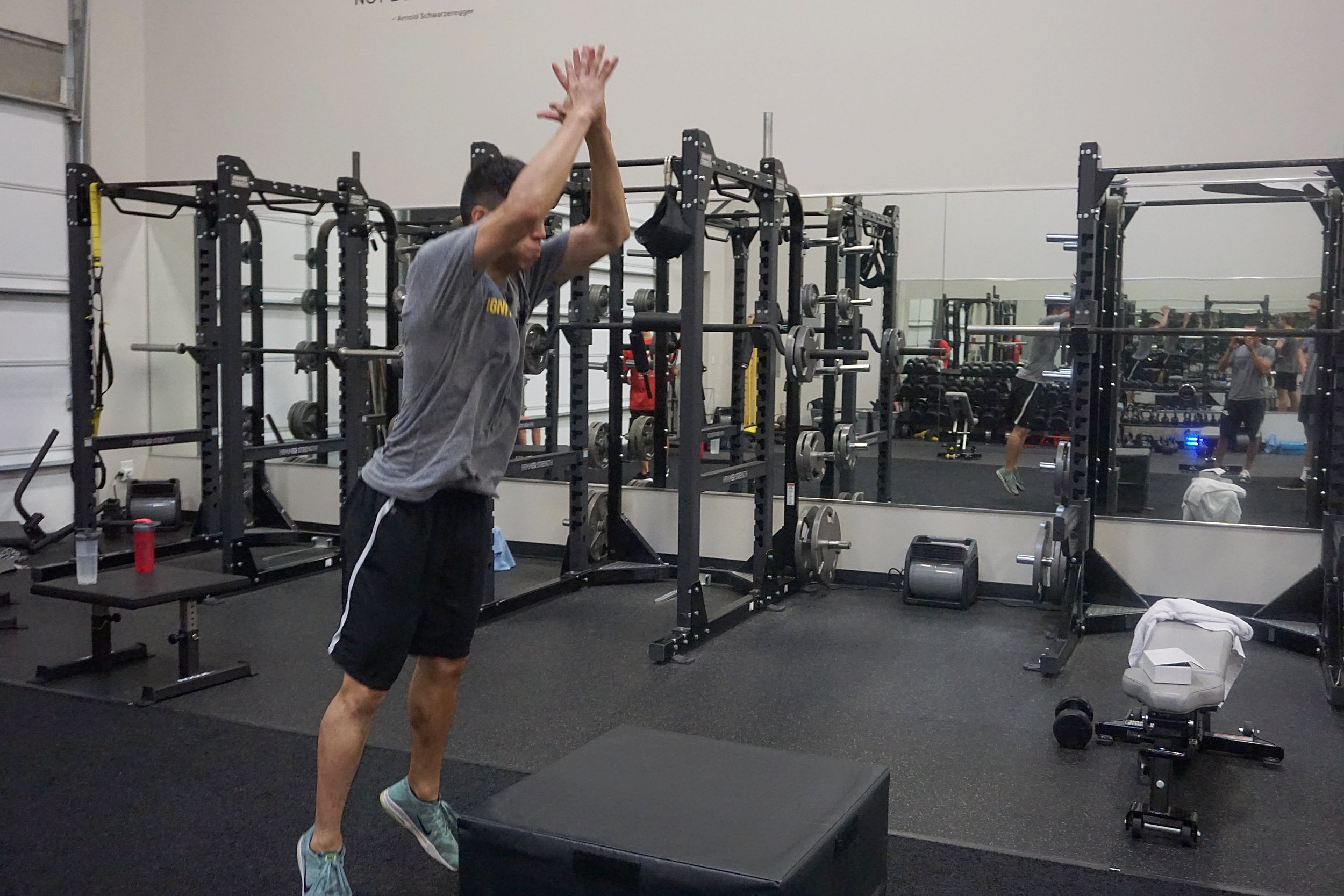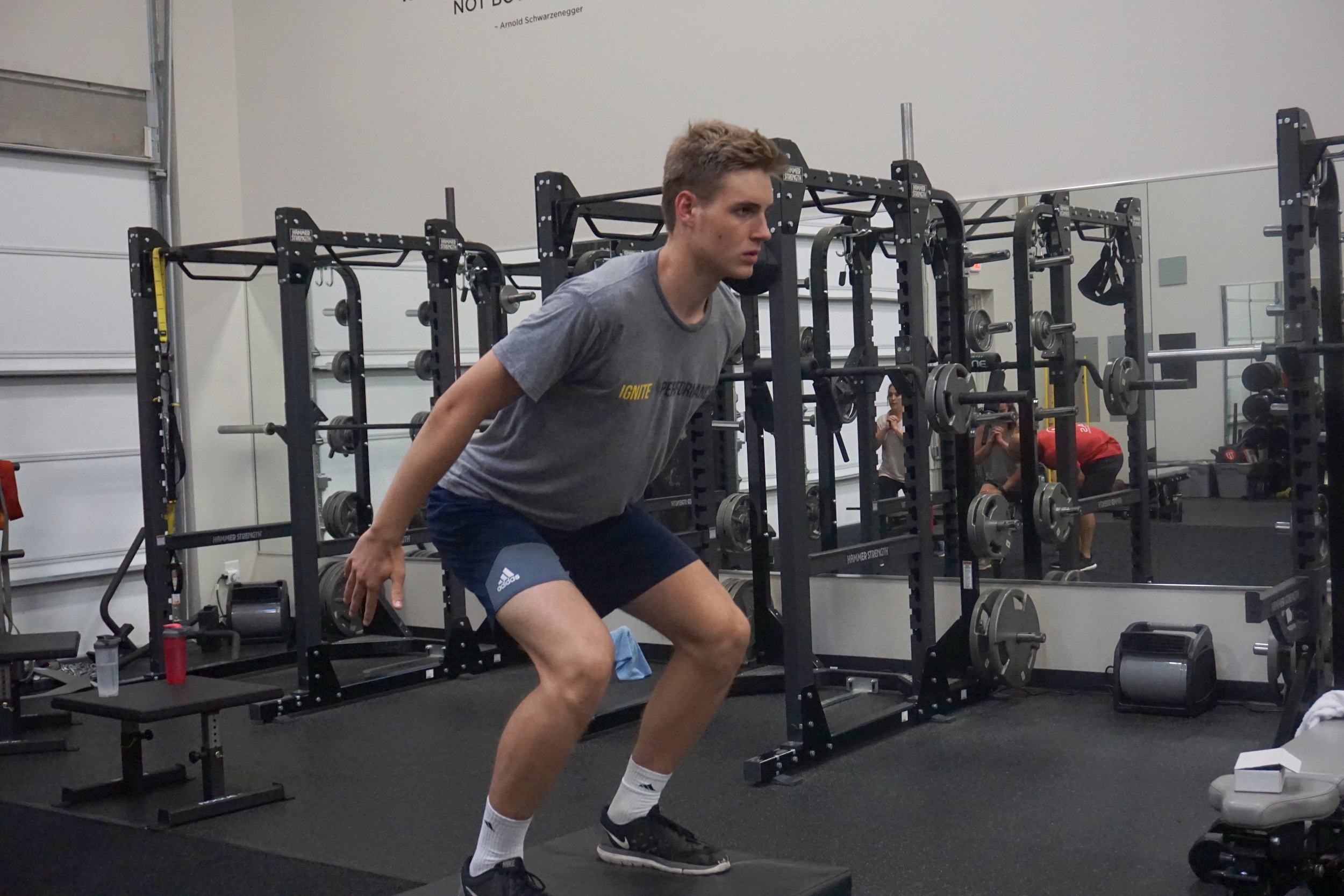Recently I saw a video of some kid on Instagram jumping onto a vending machine. My initial reaction…WHO CARES.
It seems like videos are popping up every day of people showing off their incredible box jumping prowess. Most people freak out when they see these videos. For me, it does nothing. Uhh, what Pro-League does he play in again?
Although it is impressive to see these freak athletes jump this high, there really isn’t much application. And to make matters worse, these video have led to a rash of “Insta-trainers” having their clients attempting this craziness too. Well I’m here to put an end to it. Read on to see why we need to stop this madness ASAP.
First off let me say that it is definitely something cool seeing some of these guys jump this high. Especially a guy like JJ Watt, who is pushing 300 bills. But you have to remember, he is the 1% of the 1%. However, in our “monkey see. monkey do” world, these crazy box jumps have started infiltrating into many people’s training repertoire.
In general you already know how I feel about box jumps for the general population. But even for athletes, box jumps must be understood if we are gong to properly utilize them.
A higher Box isn’t the Point
As people have continued to abuse box jumps, they seem to be getting further and further from the point. Is it to measure how high you jump?…No, they measure vertical jump for that. They don’t use a box at the NFL combine.
To understand why box jumps are used, we have to understand a key difference between 2 different types of jumps:
1) The Vertical Jump
A vertical jump is when you start on the ground, jump straight in the air, and land back on the ground. The term “vertical” measures how far the vertical displacement is between your body and the ground
2) The Box Jump
A box jump is when you start on the ground, jump straight in the air, and land on a box of a pre-determined height.
So whats the key difference between these 2 types of jumps?…The landing.
There say there are 2 constants in life, but I say there should be 3. Death, Taxes, and Gravity. We have to understand that whatever we are doing, we always have that constant 9.8 m/s2 affecting our body.
So If I jump 30″ in the air and land on a 20″ box, then I’ve reduced the affect of gravity, and ultimately the eccentric stress on my body. Compare that to jumping 30 inches inches in the air, and landing right back on the ground. It’s like falling with a 1 story building, as opposed to a 2 story building. Which one is going to affect you more? Now that’s not to say that vertical jumps are bad. Absorbing the landing I great for increasing force absorption, an decreasing risk of injury.
I will often use box jumps with my clients near game day in an effort to reduce the stress on their body and nervous system. In my some ways doing a box jump is easier than a vertical jump.
Are We REALLY measuring how high you jump?
That’s Not Your Vert Bro
One of the most annoying things I ever hear is some one claiming they have a 50 inch vert after jumping on a 50 inch box. NO YOU DO NOT.
The above picture is a frame by frame account of what someone doing a 48 inch box jump looks life. As you can see, the exercise look less like a jump and more like a contortionist act. Upon landing, he is basically in a full tuck position. Terrible mechanics for landing.
In many research papers, vertical jump is measured as the vertical displacement of the center of mass (COM) during a jump. Let’s say his center of mass starts right at his waist from his position of take off. When you look at it like that, it’s clear his COM does not travel 48 inches. This box jump is prob a better measure of hip and lumbar flexibility than anything else.
If you wanna know more about how were train vertical jump at Ignite, click here.
Not Just Up and Down
Another thing to remember about box jumps is that there is a horizontal component as well. The person is required to stand a small distance away in order so they don’t hit their shins or their fingertips with their upswing (if you’ve ever done it, its the worst!). So in order to land on the box, you must jump forward little in addition to up. This is not a true measure of vertical jumping.
Risk Vs. Reward
This reason is the most important. We have to evaluate if the potential benefit of an exercise , outweighs the potential risk. As I coach, I have to make that decison every single day. My #1 priority is to keep my athletes and clients safe and healthy. So when it comes to really high box jumps, I have to ask myself, “Does the risk outweigh the reward?”…absolutely it does.
Instead of increasing the box height, just cue your athletes to jump higher or to step back further. That increases the difficulty of the exercise without greatly increasing the risk. If you ever want to see what can happen if a box jump goes wrong, google “box jump fail”. You will not be disappointed.
I like box jumps and use them myself often. But at a certain box height, there is diminishing returns. We have to know that there are many other ways to achieve the objective of jumping higher, and becoming more explosive. The risk of injury is simply too great. It’s not worth getting yourself or a client injured all because you wanted to show off on Instagram. Insta-trainers, please take note.









